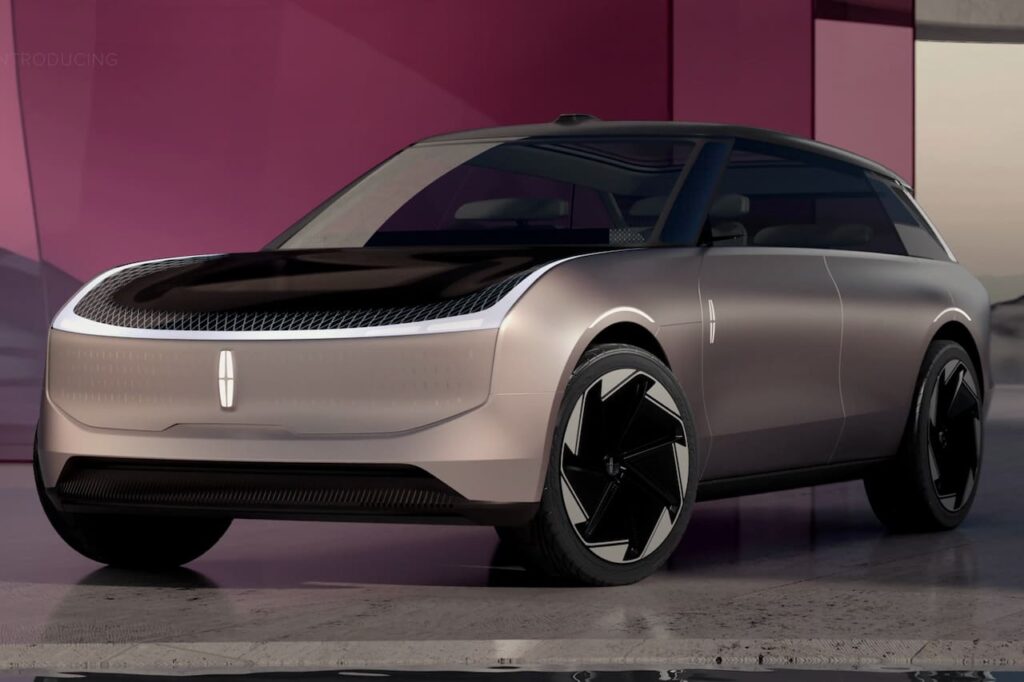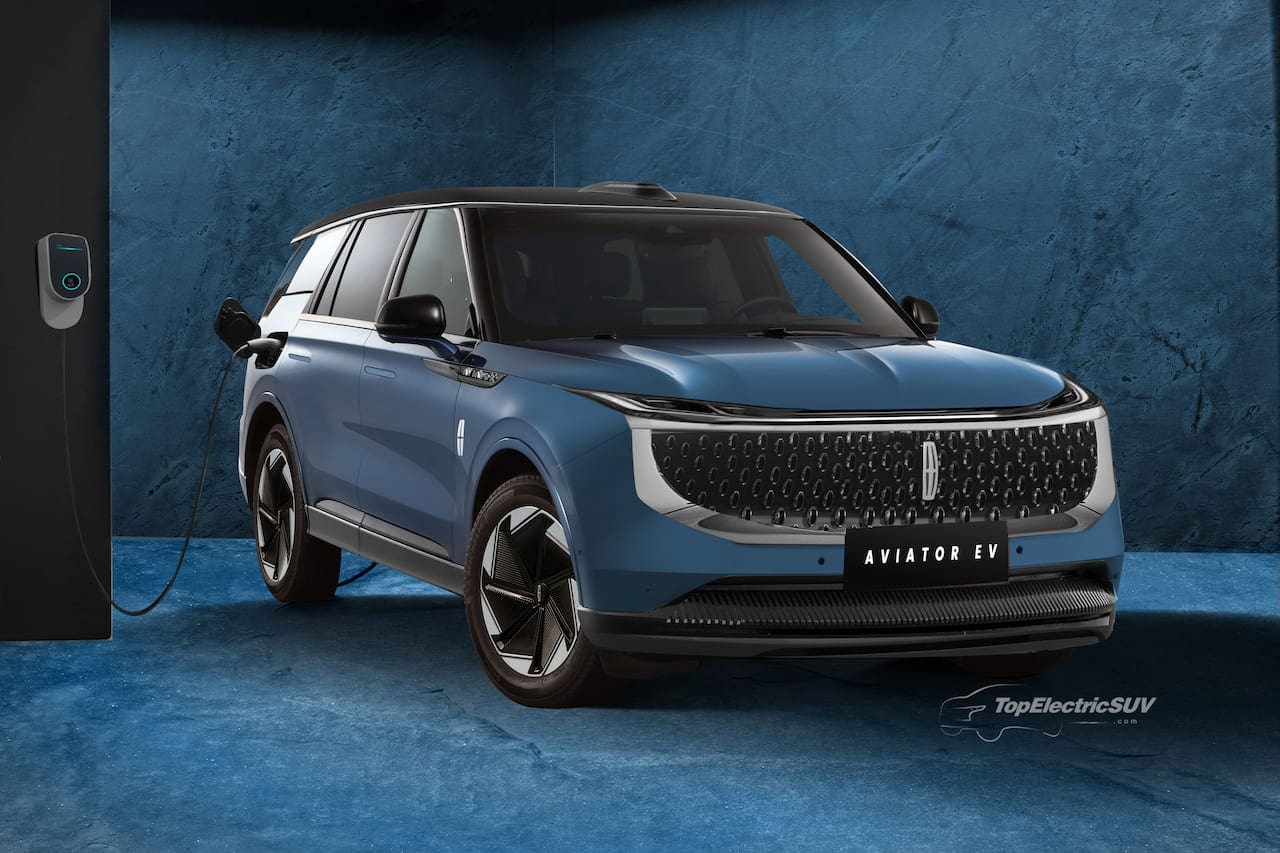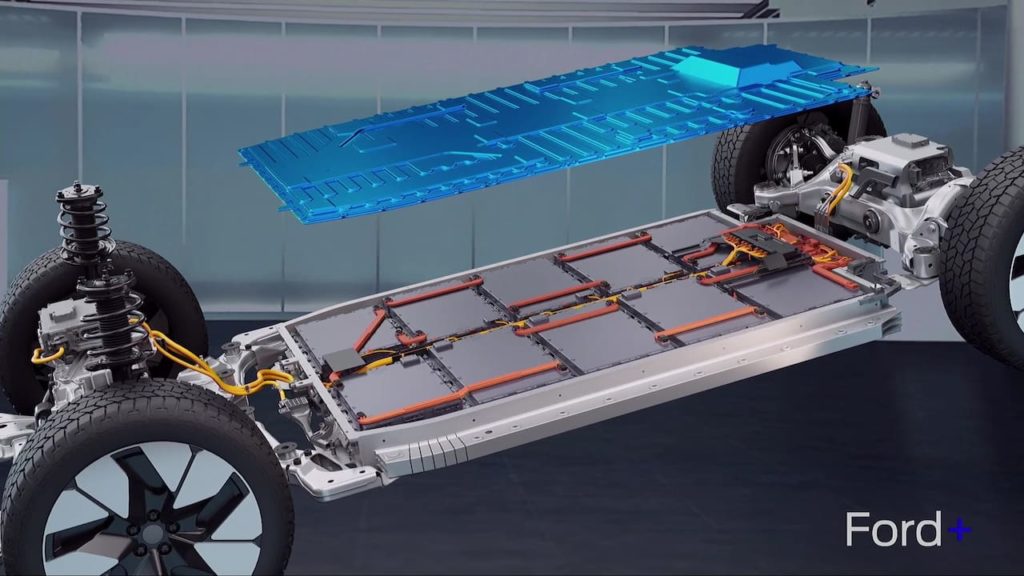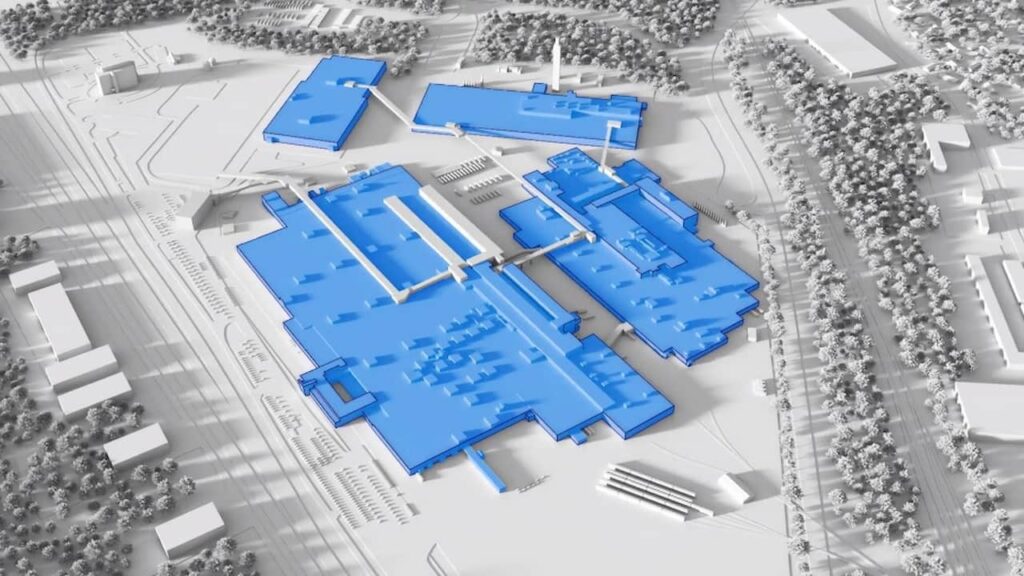Update: ‘Lincoln Aviator sales’ and ‘Canadian production’ sections updated.
It is no news that a Lincoln Aviator EV is in the making. Ford confirmed the model’s existence at the 2021 Capital Markets Day on May 26, 2021. The company hasn’t disclosed its SOP and release dates yet, but according to an Automotive News report dated October 2, 2022, late 2024 and early 2025 could be these timelines, respectively.
Design
Compared to the gas-engined Aviator, the Aviator electric could feature a notably sleeker and more contemporary design. The electric model could sit lower, have smaller dimensions without compromising on cabin comfort, thanks to the space efficiency of the bespoke EV platform, and feature a more aerodynamic shape with raked pillars and active aero. The design is likely to be inspired by the Lincoln Star Concept.


A massive enclosed grille could dominate the SUV’s face, and the headlights could be visibly slim, positioned unusually on the top. It could flaunt smooth body panels and largely closed wheels that enhance aerodynamics on the sides. The sloping roof could house a LiDAR sensor at the front for the highly autonomous driving functions of Lincoln ActiveGlide.
Hau Thai-Tang, former Chief Product Platform & Operations Officer, Ford, said at 2021 Capital Markets Day that a new rear-wheel drive/all-wheel drive BEV flexible architecture will underpin the Lincoln Aviator EV. That’s the same platform that underpins the Star Concept. In addition to family SUVs, the platform will be fit for active lifestyle vehicles with excellent driving dynamics, tough mid-size pickups, rugged SUVs, and cargo vans.
Expected features
Active aero
It is likely that the Lincoln Aviator EV will include active aerodynamics, which will give it an understated style as well as the ability to adapt to changing driving conditions. For example, its front grille could have an automatic open-close function to let air in when the drive components and the braking system require cooling and restrict the same at other times, keeping the drag to the lowest possible level.
Bidirectional onboard charger
The Aviator EV could feature a bidirectional onboard charger that lets customers use the energy stored in the battery pack to charge another EV, power devices, tools, and appliances, and maybe even supply the grid. This feature would especially be useful to power homes during power outages and rescuing EVs with depleted charging.
Frunk
F-150 Lightning customers love its frunk, which, in addition to being huge, makes loading items easy. Ford may ensure that the new platform it is developing for the Explorer and Aviator EVs allows for this convenient feature, and perhaps improve space and functionality. Aviator EV customers will likely be able to store two golf bags conveniently under the hood.

OTA updates
The Aviator EV should also support OTA updates for its drive components and onboard electronics, allowing customers to conveniently improve driving, efficiency, and other aspects and add new features right from home whenever an update is available.
Lincoln Aviator sales
In 2021, sales of the Lincoln Aviator in the U.S. stood at 20,924 units, a decline of 9.3% from 2020 (23,080 units). In 2022, however, sales recovered slightly, growing 5% year-over-year to 21,977 units. In Q1 2023, 5,236 units of the Aviator were delivered in the U.S., 5.4% lower than in Q1 2022 (4,967 units). With the arrival of the electric model in the segment, the company would be aiming to break free from these sales cycles and achieve a stable growth trajectory.
Canadian production
According to the Automotive News report mentioned at the beginning of the article, Ford will make the Aviator EV and the Explorer EV at the Oakville Assembly Plant in Canada. The Ford Edge and Lincoln Nautilus gasoline-powered models currently made at this factory could cease to exist in a few years.
Ford plans to invest CAD 1.8 billion (USD 1.35 billion) in the Oakville Assembly Plant to convert it into a high-volume EV hub. The facility will be renamed as the Oakville Electric Vehicle Complex, and the company intends to start retooling and modernization efforts in Q2 2024, with the objective of rolling out the next-generation electric vehicles in 2025. The EVs produced at this manufacturing plant will incorporate on-site-assembled battery packs.

At the Oakville Electric Vehicle Complex, a new plant covering an area of 407,000 square feet will be established for the purpose of assembling battery packs. The cells and arrays required for the batteries will be sourced from the BlueOval SK Battery Park situated in Glendale, Kentucky, USA.
Ford has confirmed that it’s bringing seven EVs to this Canadian plant and investing USD 1.8 billion by 2027. The company wants to roll out approximately 100,000 units of the Explorer EV and Aviator EV combined annually. Sales, production, and powertrain forecasting agency LMC Automotive expects the factory to have an annual EV production capacity of about 200,000 units.
Lincoln EV strategy
Lincoln aims to convert half of its global sales to ZEVs by the middle of the decade and plans to electrify its entire line-up by 2030. The company will unveil three electric vehicles by 2025 and the fourth one by 2026.
On January 10, 2023, citing an AutoForecastSolutions document consisting of a well-researched product roadmap, Ford Authority reported that the next-gen Lincoln Aviator will be an electric vehicle by default. The speculation is based on the document not mentioning a new-generation ICE Lincoln Aviator in the plan. However, better take that with a pinch of salt, as Ford Authority notes other sources have previously stated an all-new ICE Lincoln Aviator will likely debut in 2025.
TopElectricSUV says
It’s no secret that Lincoln has been struggling in recent years. In order to turn things around and restore its former glory, the brand will need launches in the electric era like the Aviator EV to be successful. While radically different from current Lincoln models, new levels of sophistication in design and styling, comfort and convenience, performance, and efficiency, could help Lincoln crack the premium EV market. Nonetheless, achieving success in this segment won’t be a walk in the park as competitors are also fiercely vying to dominate.
Lincoln Aviator EV FAQs
What is the Lincoln Aviator EV release date?
The Lincoln Aviator EV is expected to start arriving at U.S. dealers in early 2025.
What will be the Lincoln Aviator EV price?
The Lincoln Aviator EV could start at around USD 65,000.
Which models will be Lincoln Aviator EV rivals?
The all-electric Aviator will compete with the Acura ZDX & Cadillac Lyriq.
Featured Image: TopElectricSUV’s rendering of the Aviator EV, purely for illustrative purpose.

![Lincoln Navigator Electric: Here’s what you can expect [Update]](https://topelectricsuv.com/wp-content/uploads/2022/04/Lincoln-Navigator-electric-rendering-350x157.jpg)